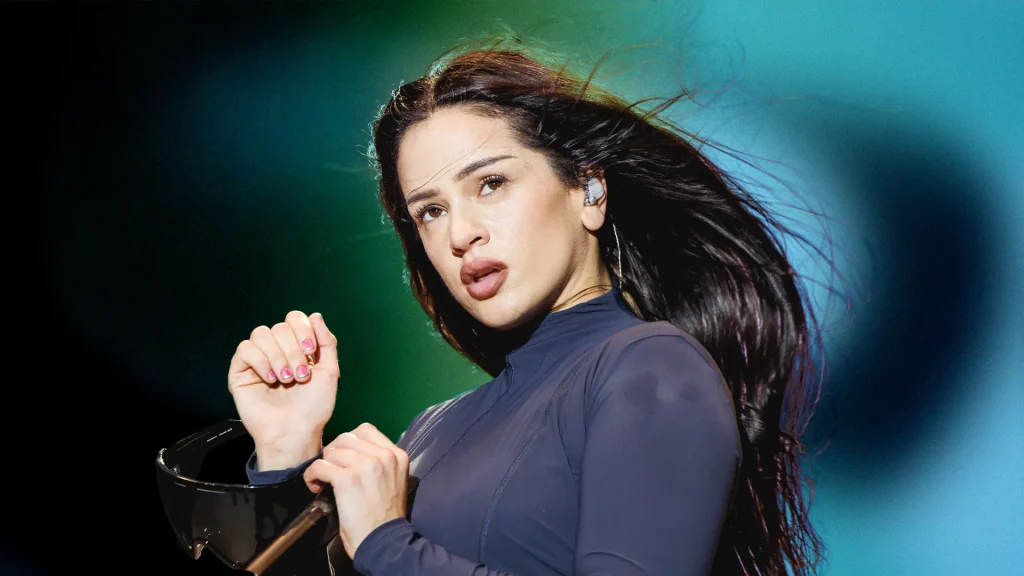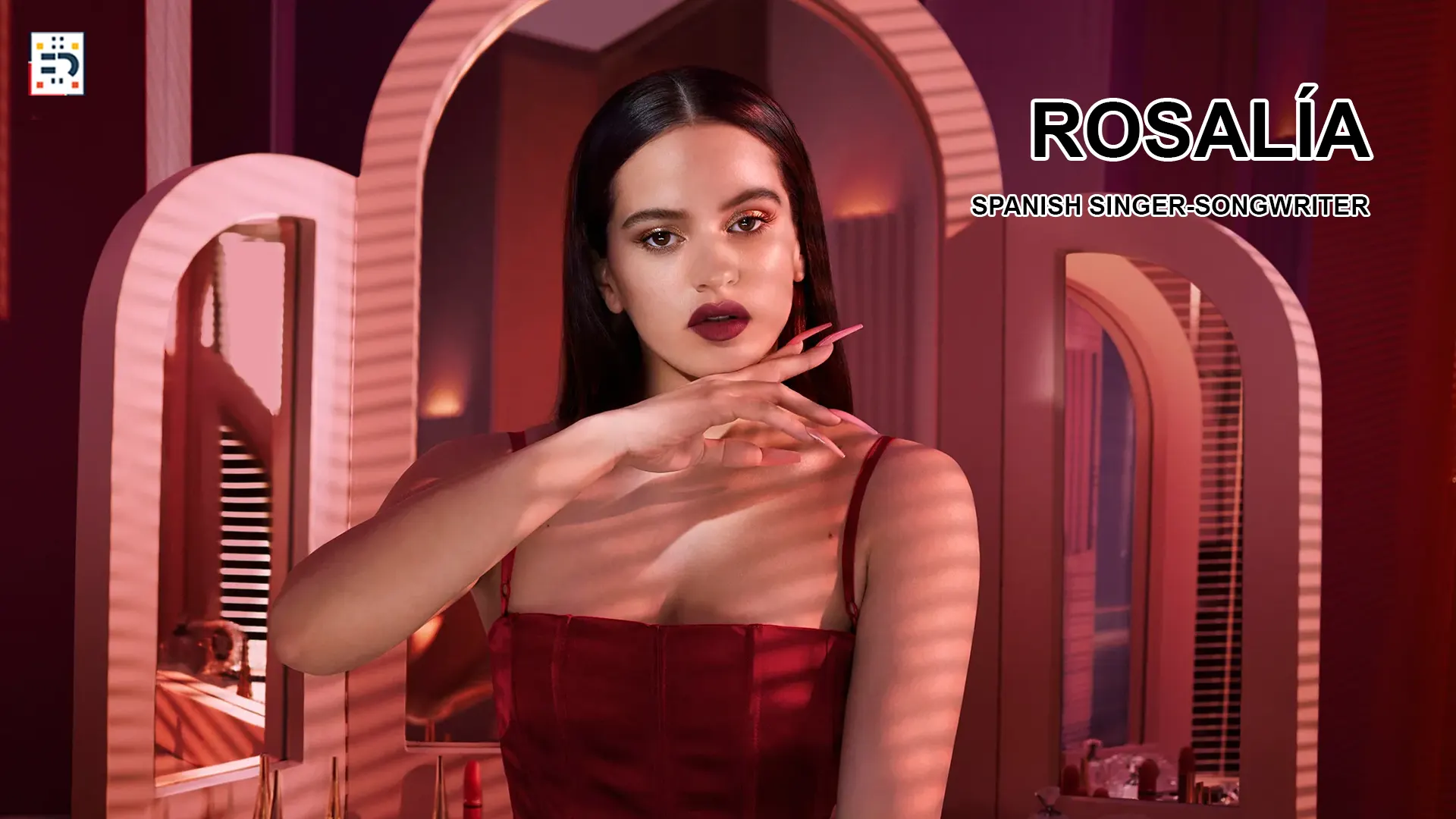Breaking News (November 2025): Spanish pop sensation Rosalía just shattered Spotify streaming records with her new album LUX, amassing 42.1 million streams in a single day—more than doubling her previous record and cementing her status as global music’s most innovative force. But this overnight success story has roots that run centuries deep into the soul of Andalusia.
The Ancient Art of Cante Jondo: Spain’s Soulful Musical Heritage
To understand Rosalía’s revolution, you must first understand what she was revolutionizing. Cante jondo, which translates to “deep song,” represents the most profound and serious forms of flamenco music. This isn’t your typical love song—this is visceral, soul-piercing art that deals with death, anguish, despair, and religious fervor.
Cante jondo emerged from the suffering and marginalization experienced by Romani people (Gitanos) in Andalusia, Spain. The vocal style is otherworldly—characterized by dramatic ornamental embellishments, microtonal inflections, and emotional intensity that legendary poet Federico García Lorca once described as possessing a duende, or transcendent spiritual quality.
For decades, this profound tradition languished outside mainstream consciousness. By the early 2000s, flamenco had largely faded from popular culture, perceived as too traditional and niche for modern audiences. It seemed destined to remain a cultural relic, appreciated mainly by purists and tourists seeking authentic Spanish experiences.
Then came a young Catalan singer who would change everything.

From Flamenco Student to Global Phenomenon: The Rosalía Origin Story
Before becoming an international pop superstar, Rosalía Vila Tobella was a dedicated student who spent years mastering the intricate rhythms, vocal techniques, and emotional depth of flamenco at Barcelona’s Catalonia College of Music. Starting at age 13—the same age she first heard legendary flamenco revivalist Camarón de la Isla—she committed herself to understanding the art form’s deepest secrets.
Her breakthrough 2018 album El Mal Querer wasn’t just music—it was literally her university thesis on flamenco history. But what emerged wasn’t imitation; it was transformation. Rosalía took the mournful cry of cante jondo and wove it into hypnotic modern production, creating something the world had never heard before.
The Global Explosion: Breaking Barriers and Records
When “Malamente” dropped in 2018, it was unlike anything in contemporary pop music. The track fused traditional palmas (handclaps), haunting flamenco vocals, and urban beats into a mesmerizing whole. The song topped Spanish charts—an almost unheard-of achievement for flamenco-influenced music—and announced Rosalía as a force to be reckoned with.
Her rise was meteoric. Grammy recognition followed, making her the first Spanish-language artist nominated for Best New Artist at the Grammy Awards. At the Latin Grammy Awards, she became the first woman to win Album of the Year twice—first for El Mal Querer (2019) and again for Motomami (2022).
Her 2019 collaboration “Con Altura” with J Balvin became a global phenomenon, while Motomami earned critical acclaim as Metacritic’s highest-rated album of 2022, with an unprecedented score of 94/100.
Breaking News: LUX Album Shatters All Records (November 2025)
Rosalía’s fourth studio album LUX, released November 7, 2025, represents her most ambitious artistic statement yet. The album:
- Set a historic Spotify record: 42.1 million first-day streams, making it the most-streamed album in a single day by any Spanish-speaking female artist
- Features 13 languages: Including Spanish, English, German, Latin, Ukrainian, and Arabic
- Stars the London Symphony Orchestra: Marking her pivot to classical and operatic elements
- Includes collaborations with Björk, Yves Tumor, and Daft Punk’s Guy-Manuel de Homem-Christo
- Earned five-star reviews from Rolling Stone, The Guardian, and NPR
The album cover, depicting Rosalía in a nun’s habit, has sparked discussions about Catholic spirituality in contemporary pop, with Vatican Cardinal José Tolentino de Mendonça praising her ability to address deep spiritual needs in modern culture.
The Ripple Effect: Reviving Flamenco for a New Generation
Rosalía’s impact extends far beyond her own discography. She has inspired contemporary artists like Marina, Kacey Musgraves, and Christina Aguilera, while her success has opened doors for emerging Spanish artists such as María José Llergo to reach international audiences.
She’s made flamenco cool again—not by diluting it, but by proving its emotional depth could resonate with audiences worldwide. Gen Z listeners who couldn’t distinguish a seguiriya from a soleá suddenly found themselves captivated by the same anguished wails that have echoed through Spanish history for centuries.
The University of New Mexico in Albuquerque even offers a graduate degree program in flamenco, demonstrating the art form’s enduring presence in the United States.

The Controversy: Cultural Evolution or Appropriation?
Not everyone celebrates Rosalía’s success. The resurgence of flamenco alongside her work has led to heated discussions about cultural appropriation, with critics arguing that Rosalía—a Catalan, non-Romani artist—is unfairly representing a tradition belonging to the Spanish Romani people who created it.
Traditional flamenco artists like Niño de Elche and Israel Fernández continue struggling for mainstream recognition, while a non-Gitano woman with major label backing becomes the global face of their art form.
Yet defenders argue that flamenco has always evolved, absorbing influences from different cultures over centuries. Unlike artists who superficially borrow aesthetics, Rosalía invested years mastering the technical and emotional demands of cante jondo before reimagining it. As legendary flamenco fusion artists Paco de Lucía and Camarón de la Isla proved in the 1970s, innovation doesn’t necessarily mean abandonment of tradition.
Beyond Music: A Complete Cultural Statement
What makes Rosalía’s impact so profound isn’t just the music—it’s the complete package. Through her visual collaborations, she creates otherworldly aesthetics that make flamenco feel futuristic rather than antiquated. In fashion, she blends traditional Spanish elements with high-end design, transforming cultural heritage into something aspirational rather than nostalgic.
Her recent Calvin Klein campaign, along with ongoing partnerships with major luxury brands, further highlights her crossover appeal beyond music.
The Numbers Tell the Story
Rosalía’s achievements are staggering:
- 2 Grammy Awards and 11 Latin Grammy Awards
- 42.1 million first-day Spotify streams for LUX (surpassing Karol G’s previous record of 35.7 million)
- First woman to win Latin Grammy Album of the Year twice
- First Spanish-language artist nominated for Best New Artist at the Grammys
- 12 tracks from LUX in Spotify’s Global Top 50 within days of release
- Performances at Coachella, Glastonbury, and major festivals worldwide
Flamenco in America: A Growing Connection
The United States has a deeper connection to flamenco than many realize. New York City’s first flamenco performance occurred in the 1840s, and the art form has maintained a presence in American culture ever since.
New Mexico in particular maintains strong flamenco traditions, with the National Institute of Flamenco sponsoring annual festivals. Flamenco performances are widespread in Albuquerque and Santa Fe communities, demonstrating the art form’s American roots.
American jazz, which shares many traits with flamenco, has similarly evolved from marginalized origins to global recognition—a parallel that makes Rosalía’s success feel like a natural cultural progression.
The Future of Flamenco: What LUX Signals
LUX represents more than commercial success—it signals flamenco’s evolution into a truly global language. By incorporating elements from 13 different languages and cultures, Rosalía demonstrates that traditional music can thrive in contemporary contexts without losing its soul.
UNESCO recognized flamenco as Intangible Cultural Heritage of Humanity in 2010, acknowledging its importance to world culture. Rosalía’s work ensures that recognition extends beyond academic appreciation to genuine mainstream engagement.

Key Takeaways: Why Rosalía’s Impact Matters
- Preservation Through Innovation: She proved ancient traditions can attract new audiences without being watered down
- Breaking Language Barriers: Spanish-language music is increasingly dominating global charts, with LUX leading the charge
- Female Artist Power: She’s shattered records previously held by male-dominated genres
- Cultural Bridge-Building: She’s introduced millions to a centuries-old tradition they might never have discovered
- Artistic Integrity: She’s shown that commercial success doesn’t require compromising vision
FAQs About Rosalía and the Flamenco Disruption
1. What does “The Flamenco Disruption” mean?
It refers to how Rosalía reinvented flamenco music, especially cante jondo, by merging it with contemporary pop and electronic production.
2. Why is Rosalía’s use of cante jondo significant?
Cante jondo is one of flamenco’s oldest, most expressive forms. Rosalía modernized it without losing its emotional intensity.
3. Did Rosalía study traditional flamenco?
Yes. She formally trained under established flamenco teachers and completed academic studies in the genre.
4. Why did El Mal Querer become so influential?
Its fusion of medieval storytelling, flamenco vocals, and modern production created a unique, groundbreaking sound.
5. Has Rosalía faced criticism for modernizing flamenco?
Yes. Some argue her interpretation diverges from tradition, while others praise her for exposing flamenco to a global audience.
6. Where can I learn more about flamenco music?
A great starting point is the Instituto Andaluz del Flamenco website, which offers history, resources, and artist profiles.

The Disruption Continues
Rosalía didn’t just bring cante jondo to global pop stages—she proved that audiences hungry for authenticity will embrace music that challenges them emotionally and culturally, even when they don’t understand the language.
As she declared in a recent interview, “That folklore is part of who I am, and that’s the key: I don’t want to lose my roots. Not now or ever will I put flamenco aside.”
For American audiences discovering flamenco through Rosalía, she offers an entry point into a centuries-old tradition of expressing humanity’s darkest depths and brightest triumphs. Whether you view her as a cultural bridge-builder or a controversial disruptor, one thing is undeniable: she ensured that cante jondo—the deep song of suffering, survival, and transcendence—found new life and new listeners in the 21st century.
The flamenco disruption isn’t about replacing tradition with modernity. It’s about proving that tradition, when wielded with genuine respect and audacious creativity, can be the most revolutionary force in contemporary music.
#Rosalía #Flamenco #CanteJondo #LUX #SpanishMusic #GlobalPop #FlamencoRevival #MusicInnovation #RomaniCulture #NewMusic


